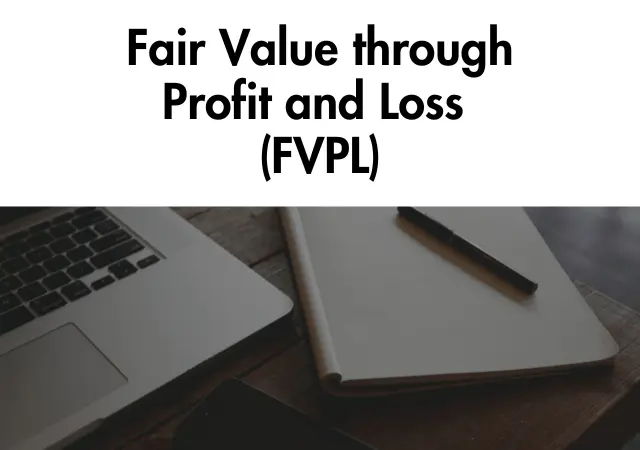Fair Value through Profit and Loss a Concept that MEANS that at each ‘Balance Sheet date’ the asset or liability is Re-Measured to fair value (FV) and any Movement in that fair value is taken directly to the Income Statement.
Table of Contents
Fair Value through Profit and Loss – Accounting (As Per IFRS 9)
1. Financial Asset
1.1 Debt Investment at FVPL
Fair Value through Profit and Loss (FVPL) is the residual category in IFRS 9.
The Accounting Requirements for ‘DEBT Instruments’ classified at FVPL are:
- Debt investment at FVPL is initially Measured at fair value;
- Transaction costs are immediately recognized in P&L;
- Debt investment at FVPL is subsequently Measured at fair value;
- Interest income is recognized in P&L using the effective interest rate (IRR);
- Foreign exchange gains and losses are recognized in P&L; AND
- Change in the carrying amount on Re-Measurement to fair value is recognized in P&L.
1.2 Equity Investment at FVPL
Equity Instrument is Classified and Measured at FVPL if it is:
| A held for trading ‘Equity Investment’; AND |
| An equity investment that the entity has not elected to classify as at FVOCI. |
e.g, the Investment in shares of listed companies that the entity has NOT elected to account for as at FVOCI.
The Accounting Requirements for ‘EQUITY Instruments’ classified at FVPL are:
- Equity investment at FVPL is initially Measured at fair value;
- Transaction costs are immediately recognized in P&L;
- Equity investment at FVPL is subsequently Measured at fair value;
- Dividend is recognized in P&L;
- Foreign exchange gains and losses are recognized in P&L; AND
- Subsequent changes in the fair value of the equity instrument are recognized in P&L.

2. Financial Liability
2.1 Financial Liability at FVPL
At Initial recognition, Financial Liability May-be classified and Measured at Fair Value through Profit and Loss (FVPL) if:
- It eliminates or significantly reduces a Measurement or recognition inconsistency; OR
- This would allow the company to reflect a documented risk management strategy.
[Any such designation is IRREVOCABLE.]
| Examples of Financial Liabilities that are Likely to be Classified and Accounted for at FVPL INCLUDE: |
|---|
| (a) Interest rate swaps (NOT designated in a hedging relationship). |
| (b) Commodity future/option contracts (NOT designated in a hedging relationship). |
| (c) Foreign exchange future/option contracts (NOT designated in a hedging relationship). |
| (d) Convertible note liabilities designated at FVPL. |
| (e) Contingent consideration payable that arises from one or more business combinations. |
The Accounting Requirements for Financial Liability classified at FVPL are:
- Financial liability at FVPL is initially Measured at fair value;
- Transaction costs are immediately recognized in P&L;
- Financial liability at FVPL is subsequently Measured at fair value;
- Interest expense is recognized in P&L using the effective interest rate (IRR);
- Foreign exchange gains and losses are recognized in P&L;
- Change in the carrying amount on Re-Measurement to fair value is recognized in P&L. However, change in fair value that relates to the change in the entity’s own credit status is recognized in OCI instead of P&L; AND
- On de-recognition of the financial liability, the cumulative change in fair value arising from a change in the entity’s own credit status is required to remain in OCI and is NOT recycled to P&L. However, IFRS 9 permits entities to transfer amounts between reserves within equity (i.e. between FVOCI reserve and retained earnings).
Chartered Accountant (Institute of Chartered Accountants of Pakistan)
Bachelor of Accounting Honours (Asia e University, Malaysia)